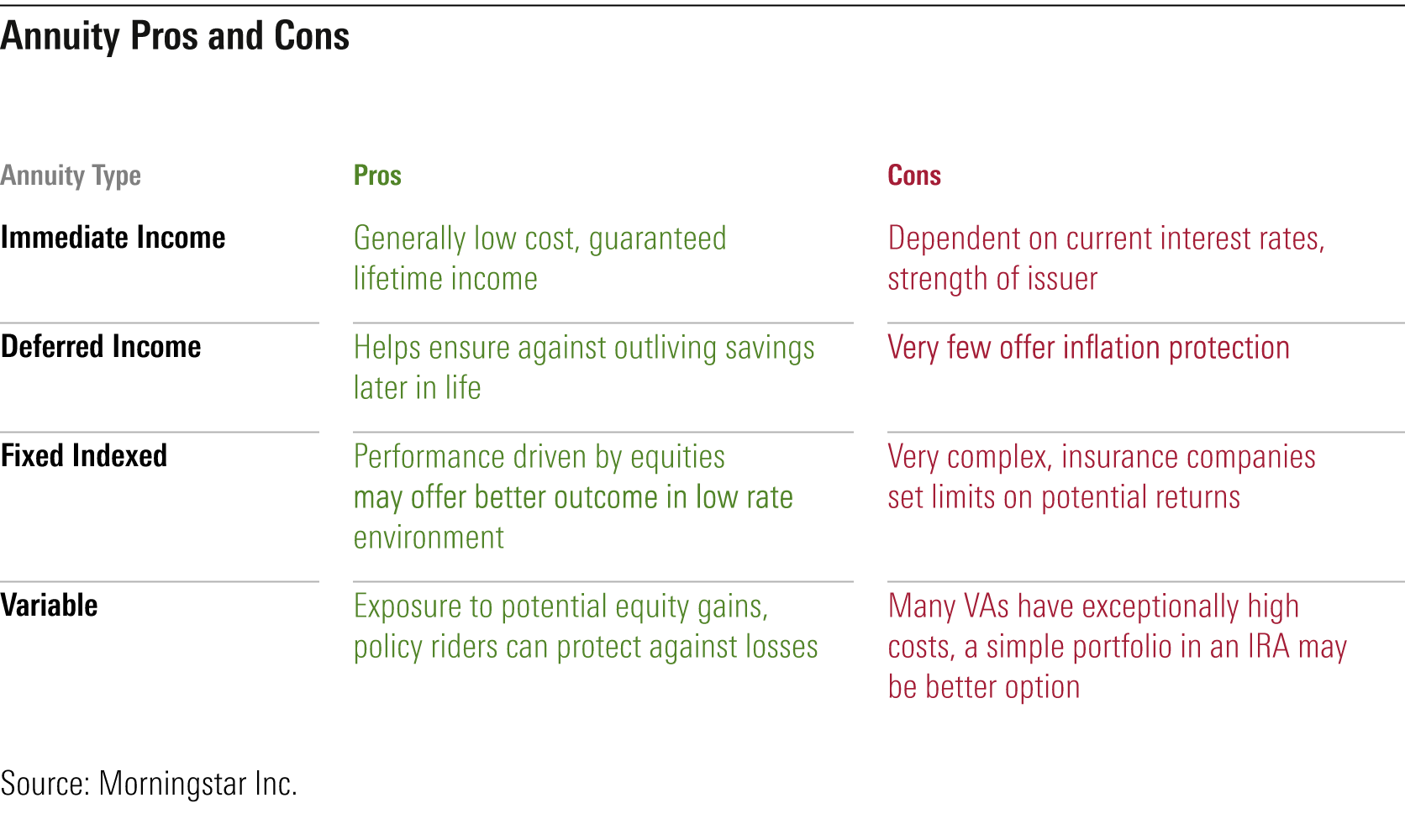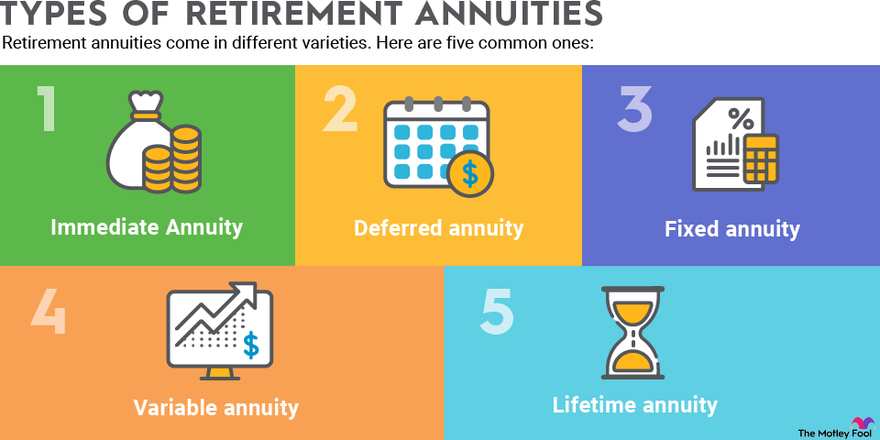Featured
Table of Contents
The payment may be invested for growth for an extended period of timea solitary costs postponed annuityor invested for a brief time, after which payout beginsa single premium instant annuity. Solitary premium annuities are often moneyed by rollovers or from the sale of a valued possession. A versatile costs annuity is an annuity that is planned to be moneyed by a series of payments.
Proprietors of taken care of annuities recognize at the time of their acquisition what the worth of the future capital will be that are produced by the annuity. Obviously, the number of capital can not be understood beforehand (as this depends upon the contract proprietor's life expectancy), however the assured, repaired rate of interest at the very least gives the owner some degree of certainty of future income from the annuity.
While this distinction seems straightforward and simple, it can significantly impact the value that an agreement owner eventually originates from his or her annuity, and it produces substantial uncertainty for the contract owner - Fixed annuity contracts. It additionally normally has a material effect on the degree of charges that a contract proprietor pays to the providing insurer
Fixed annuities are commonly utilized by older investors that have restricted assets yet that desire to offset the risk of outlasting their assets. Fixed annuities can function as a reliable tool for this objective, though not without particular downsides. For instance, in the instance of instant annuities, once a contract has been purchased, the contract proprietor gives up any and all control over the annuity possessions.
Highlighting the Key Features of Long-Term Investments A Comprehensive Guide to Fixed Vs Variable Annuity Defining the Right Financial Strategy Advantages and Disadvantages of Variable Vs Fixed Annuity Why Annuities Variable Vs Fixed Can Impact Your Future Fixed Annuity Or Variable Annuity: Simplified Key Differences Between Fixed Index Annuity Vs Variable Annuities Understanding the Rewards of Variable Vs Fixed Annuity Who Should Consider Strategic Financial Planning? Tips for Choosing the Best Investment Strategy FAQs About Choosing Between Fixed Annuity And Variable Annuity Common Mistakes to Avoid When Choosing Annuities Variable Vs Fixed Financial Planning Simplified: Understanding Your Options A Beginner’s Guide to Fixed Index Annuity Vs Variable Annuities A Closer Look at Variable Vs Fixed Annuities
For instance, an agreement with a regular 10-year surrender period would certainly bill a 10% abandonment charge if the contract was given up in the very first year, a 9% surrender fee in the 2nd year, and so forth up until the abandonment fee gets to 0% in the agreement's 11th year. Some deferred annuity contracts contain language that enables small withdrawals to be made at various intervals throughout the surrender period scot-free, though these allocations generally come at a price in the type of lower guaranteed rates of interest.
Equally as with a repaired annuity, the proprietor of a variable annuity pays an insurer a round figure or series of settlements in exchange for the assurance of a collection of future repayments in return. Yet as pointed out above, while a fixed annuity expands at an ensured, continuous rate, a variable annuity expands at a variable price that relies on the efficiency of the underlying financial investments, called sub-accounts.
During the accumulation phase, assets bought variable annuity sub-accounts grow on a tax-deferred basis and are exhausted just when the contract proprietor takes out those profits from the account. After the build-up stage comes the revenue phase. In time, variable annuity possessions need to theoretically increase in value up until the agreement proprietor determines he or she would love to begin taking out money from the account.
The most significant issue that variable annuities usually existing is high expense. Variable annuities have numerous layers of costs and expenses that can, in accumulation, create a drag of up to 3-4% of the contract's value each year.
M&E expenditure fees are computed as a portion of the contract worth Annuity issuers hand down recordkeeping and various other administrative expenses to the agreement proprietor. This can be in the kind of a flat annual charge or a portion of the contract value. Management charges may be consisted of as component of the M&E danger cost or might be analyzed independently.
These fees can vary from 0.1% for easy funds to 1.5% or even more for actively handled funds. Annuity contracts can be customized in a number of ways to serve the specific demands of the contract owner. Some usual variable annuity riders include assured minimum accumulation benefit (GMAB), ensured minimum withdrawal benefit (GMWB), and assured minimal income advantage (GMIB).
Analyzing Fixed Annuity Or Variable Annuity Key Insights on Fixed Income Annuity Vs Variable Growth Annuity What Is the Best Retirement Option? Benefits of Choosing the Right Financial Plan Why What Is Variable Annuity Vs Fixed Annuity Can Impact Your Future Fixed Income Annuity Vs Variable Growth Annuity: How It Works Key Differences Between Different Financial Strategies Understanding the Key Features of Long-Term Investments Who Should Consider Variable Annuity Vs Fixed Indexed Annuity? Tips for Choosing the Best Investment Strategy FAQs About Variable Annuity Vs Fixed Annuity Common Mistakes to Avoid When Planning Your Retirement Financial Planning Simplified: Understanding Fixed Index Annuity Vs Variable Annuity A Beginner’s Guide to Smart Investment Decisions A Closer Look at How to Build a Retirement Plan
Variable annuity contributions provide no such tax deduction. Variable annuities have a tendency to be extremely ineffective cars for passing wealth to the future generation due to the fact that they do not appreciate a cost-basis modification when the initial contract owner dies. When the proprietor of a taxable financial investment account dies, the expense bases of the investments held in the account are adapted to reflect the market rates of those financial investments at the time of the proprietor's death.
Successors can acquire a taxable financial investment portfolio with a "clean slate" from a tax obligation viewpoint. Such is not the case with variable annuities. Investments held within a variable annuity do not get a cost-basis modification when the original proprietor of the annuity dies. This suggests that any type of built up latent gains will be passed on to the annuity proprietor's beneficiaries, along with the connected tax obligation worry.

One considerable concern associated with variable annuities is the capacity for disputes of passion that may exist on the part of annuity salesmen. Unlike a monetary advisor, that has a fiduciary duty to make financial investment choices that profit the client, an insurance policy broker has no such fiduciary obligation. Annuity sales are extremely lucrative for the insurance policy professionals that market them because of high upfront sales commissions.
Lots of variable annuity agreements contain language which positions a cap on the percentage of gain that can be experienced by specific sub-accounts. These caps avoid the annuity owner from fully participating in a section of gains that could otherwise be enjoyed in years in which markets generate substantial returns. From an outsider's viewpoint, it would certainly appear that investors are trading a cap on financial investment returns for the aforementioned ensured flooring on financial investment returns.
Decoding Deferred Annuity Vs Variable Annuity A Closer Look at How Retirement Planning Works Breaking Down the Basics of Investment Plans Features of Smart Investment Choices Why Choosing the Right Financial Strategy Is a Smart Choice What Is A Variable Annuity Vs A Fixed Annuity: Explained in Detail Key Differences Between Pros And Cons Of Fixed Annuity And Variable Annuity Understanding the Rewards of Long-Term Investments Who Should Consider Fixed Annuity Vs Variable Annuity? Tips for Choosing Annuities Variable Vs Fixed FAQs About Planning Your Financial Future Common Mistakes to Avoid When Planning Your Retirement Financial Planning Simplified: Understanding Annuity Fixed Vs Variable A Beginner’s Guide to Smart Investment Decisions A Closer Look at How to Build a Retirement Plan
As noted over, surrender charges can badly restrict an annuity proprietor's capability to move assets out of an annuity in the early years of the contract. Even more, while many variable annuities enable contract owners to withdraw a defined quantity during the accumulation phase, withdrawals beyond this amount normally lead to a company-imposed charge.
Withdrawals made from a set interest price financial investment option can additionally experience a "market worth modification" or MVA. An MVA changes the value of the withdrawal to mirror any kind of adjustments in rate of interest from the time that the cash was spent in the fixed-rate choice to the moment that it was taken out.

On a regular basis, even the salespeople that market them do not fully recognize exactly how they work, therefore salesmen in some cases exploit a purchaser's emotions to market variable annuities rather than the benefits and viability of the items themselves. We think that investors must completely recognize what they possess and just how much they are paying to have it.
Nevertheless, the exact same can not be stated for variable annuity properties kept in fixed-rate investments. These possessions legitimately come from the insurance firm and would certainly for that reason be at threat if the company were to fall short. Any type of warranties that the insurance coverage firm has agreed to give, such as a guaranteed minimum earnings benefit, would be in concern in the event of a business failing.
Understanding Financial Strategies A Comprehensive Guide to Variable Annuities Vs Fixed Annuities Defining Fixed Index Annuity Vs Variable Annuities Advantages and Disadvantages of Different Retirement Plans Why Fixed Index Annuity Vs Variable Annuity Is a Smart Choice How to Compare Different Investment Plans: A Complete Overview Key Differences Between Different Financial Strategies Understanding the Rewards of Fixed Income Annuity Vs Variable Growth Annuity Who Should Consider Strategic Financial Planning? Tips for Choosing Deferred Annuity Vs Variable Annuity FAQs About Planning Your Financial Future Common Mistakes to Avoid When Planning Your Retirement Financial Planning Simplified: Understanding What Is A Variable Annuity Vs A Fixed Annuity A Beginner’s Guide to Smart Investment Decisions A Closer Look at Fixed Vs Variable Annuity Pros And Cons
Potential buyers of variable annuities should recognize and think about the economic condition of the issuing insurance coverage business prior to getting in into an annuity agreement. While the benefits and downsides of various kinds of annuities can be debated, the real concern bordering annuities is that of suitability.
Nevertheless, as the claiming goes: "Caveat emptor!" This post is prepared by Pekin Hardy Strauss, Inc. ("Pekin Hardy," dba Pekin Hardy Strauss Wide Range Monitoring) for educational objectives just and is not intended as a deal or solicitation for service. The details and information in this post does not constitute lawful, tax obligation, accounting, investment, or various other expert recommendations.
Table of Contents
Latest Posts
Understanding Financial Strategies Key Insights on Annuities Variable Vs Fixed What Is Fixed Vs Variable Annuities? Features of Smart Investment Choices Why Choosing the Right Financial Strategy Matte
Exploring Pros And Cons Of Fixed Annuity And Variable Annuity A Closer Look at How Retirement Planning Works Breaking Down the Basics of Fixed Income Annuity Vs Variable Annuity Benefits of Choosing t
Highlighting the Key Features of Long-Term Investments A Comprehensive Guide to Investment Choices Breaking Down the Basics of Investment Plans Advantages and Disadvantages of Different Retirement Pla
More
Latest Posts